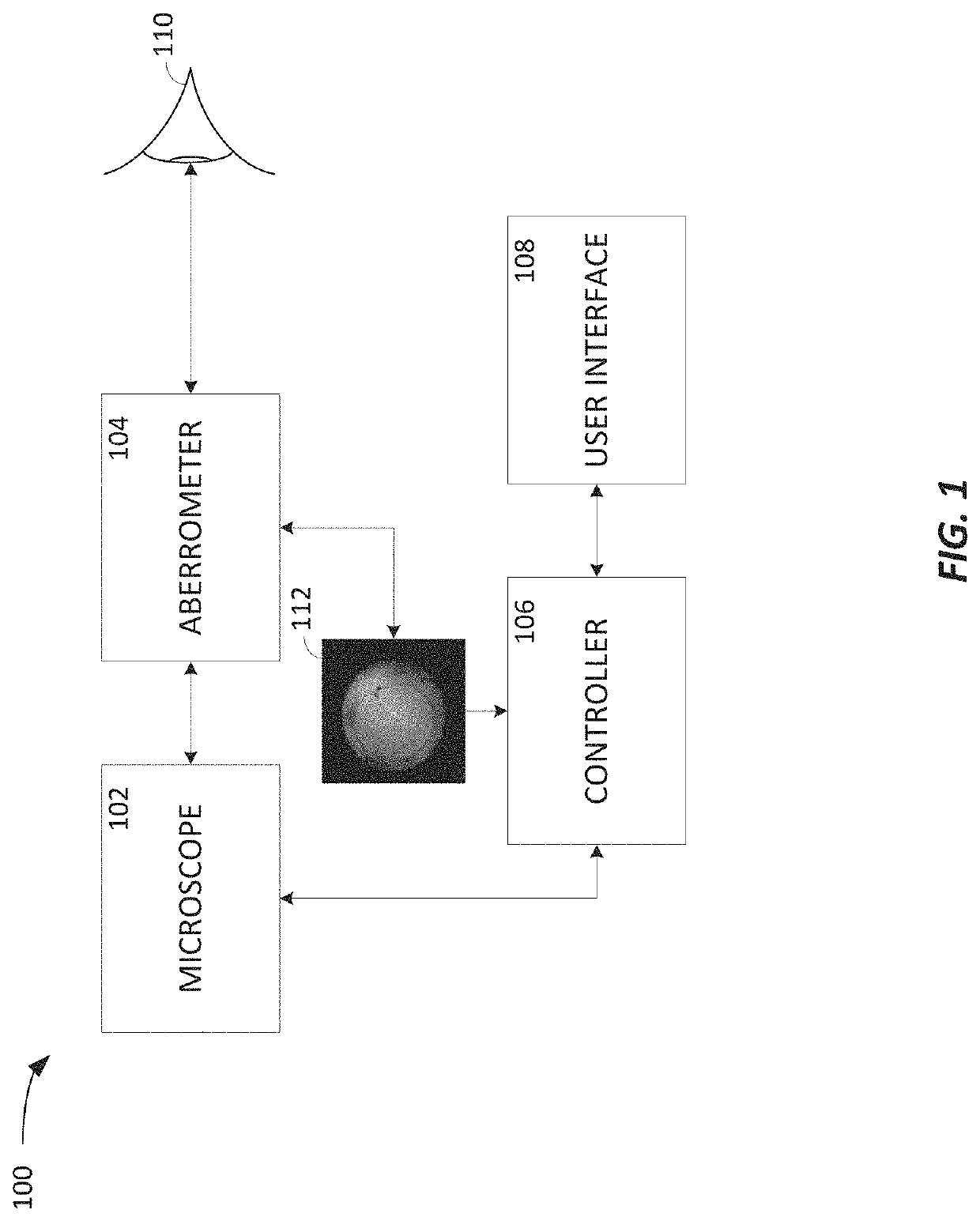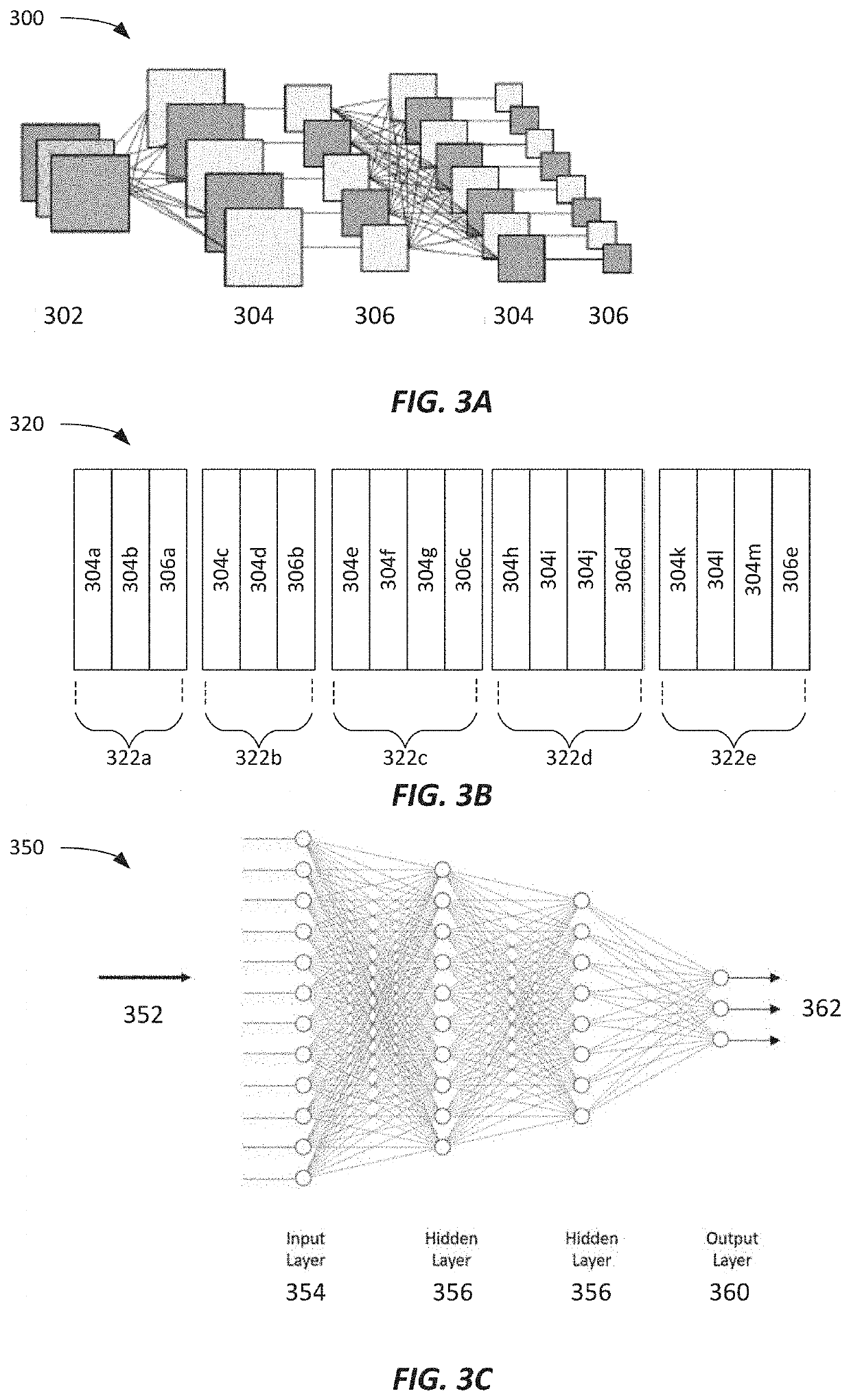Real-time detection of artifacts in ophthalmic images
a technology of artifact detection and ophthalmology, applied in image analysis, image enhancement, instruments, etc., can solve the problems of reducing the efficacy of such procedures, requiring additional surgical intervention, and poor patient outcomes
- Summary
- Abstract
- Description
- Claims
- Application Information
AI Technical Summary
Benefits of technology
Problems solved by technology
Method used
Image
Examples
example method
of Training a Machine Learning Model for Processing Image Data to Identify Artifacts Therein
[0164]FIG. 6 depicts an example method 600 for training a machine learning model to identify digital images that include one or more artifacts. The training of the machine learning model may be completed by one or more of the controller 106 and / or the system 100 of FIG. 1 or a component or system external to the system 100. The method 600 may be used to train, for example, the machine learning models of FIGS. 2A and 2B. In some embodiments, the method 600 only trains the second stage 208, 218, and / or 228 (i.e., the classification stage) and the first stage 204 (i.e., the feature extraction stage) is not trained.
[0165]Method 600 starts at block 602 and, at block 604, begins with obtaining the images that will be used to train the machine learning model. In some instances, the images are obtained in real-time from an image capture devices (for example, the aberrometer 104 and / or one or more of ...
example processing
Systems
[0171]FIG. 7 is a diagram of an embodiment of a processing system or device. According to some embodiments, the processing system of FIG. 7 is representative of a computing system that may be included in one or more of intraoperative aberrometry systems that implement the machine learning model processing described herein, with reference to the aberrometer 104, the controller 106, the user interface 108, and / or the like. Specifically, the processing system of FIG. 7 may implement one or more of the machine learning models 203, 217, and 227 according to the data flows 200, 250a, 250b, and 250c and otherwise introduced and discussed herein to identify artifacts in image data of patient eye images, as shown in FIGS. 4A-4G, and / or the like.
[0172]FIG. 7 illustrates a computing system 700 where the components of system 700 are in electrical communication with each other. The system 700 includes a processor 710 and a system bus 705 that couples the various components. For example, t...
example clauses
[0200]Implementation examples are described in the following numbered clauses:
[0201]Clause 1: A system for processing image data from an intraoperative diagnostic device in real-time during an ophthalmic procedure, the system comprising: an image capture element configured to capture a grayscale image of a patient's eye from the intraoperative diagnostic device, the grayscale image having a first size; an image processing element configured to: obtain the grayscale image from the image capture element; scale the grayscale image from the first size to a second size; and preprocess the scaled grayscale image in preparation for classification; a two-stage classification model comprising: a feature extraction stage configured to process the scaled grayscale image and generate a feature vector based on the scaled grayscale image, and a classification stage configured to process the feature vector and generate an output vector based on the feature vector; wherein the image processing elem...
PUM
 Login to View More
Login to View More Abstract
Description
Claims
Application Information
 Login to View More
Login to View More - R&D
- Intellectual Property
- Life Sciences
- Materials
- Tech Scout
- Unparalleled Data Quality
- Higher Quality Content
- 60% Fewer Hallucinations
Browse by: Latest US Patents, China's latest patents, Technical Efficacy Thesaurus, Application Domain, Technology Topic, Popular Technical Reports.
© 2025 PatSnap. All rights reserved.Legal|Privacy policy|Modern Slavery Act Transparency Statement|Sitemap|About US| Contact US: help@patsnap.com



